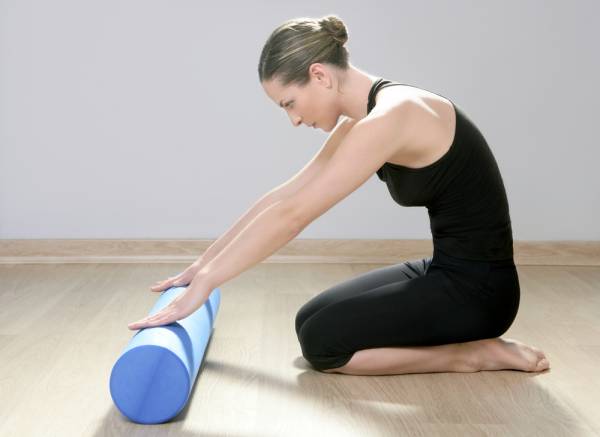Originally Posted At: https://breakingmuscle.com/feed/rss
This year marks twenty years in the personal training game and while it hasn’t always been full-time work there hasn’t been a period over that time where I haven’t had at least some clients to keep my hand in. In my opinion most learning comes from mistakes and I’ve made plenty – so many mistakes that you could write an article about them. The following are the first ten lessons learned from my twenty years in training. (Read part two for lessons eleven through twenty.)
Training Lessons 1 Through 10
1. No one knows everything.
People like to have faith. We like to believe there’s a single underlying answer to every problem we have whether it be financial, religious, or fitness. But training isn’t black or white and no single thing, or person, is the fix all answer. Paul Chek had some great ideas but there were issues, too. Charles Poliquin is also incredibly smart, but misses some things. The same goes for Boyle, Cosgrove, De Franco, Cook, Tsatsouline, King, Tate, and Francis. But one of the things that separates these men from many of their contemporaries is they recognize the gaps in their understanding and seek to fix them. Mike Boyle and Pavel Tsatsouline, in particular, have always impressed me with their unapologetic march forward and their efforts to improve upon what is already a very stable methodology. Great training is a melange of many topics – don’t limit yourself to just one ideology.
2. Don’t just have a hammer.
If you need to fix a car you’ll need a big tool box. One of the issues that people have is they tend to tie themselves to a single theme or person. Using the RKC as an example, there are many fantastic kettlebell instructors but if you move them away from their single tool they are lost. I have to quote Alwyn Cosgrove here, “I am not a kettlebell guy or a bodyweight guy. I am a results guy.” Pick the right tool to get the job done as quickly as possible.
3. Do the opposite.
The first person I ever heard say this was Charles Staley, who wrote an article about how if you want to be really successful in the gym do the opposite of what everyone else does. If they’re doing upper body using isolation lifts train the lower body with compound lifts. If they’re doing three sets of ten you should do ten sets of three. If they’re using machines you should use free weights. It’s a simple piece of advice but really very powerful and works well. For trainers I’ll also add this works in a business sense too, and I credit one of my bosses, Christian Marchegiani of Thump Boxing, for saying this to me: whatever everyone else is doing around you in terms of their business, just flip it and do the opposite. Trust me that it works just as well as Staley’s similar tip does for training.
4. No cookie cutter programs.
I simply cannot stand the typical generic stuff you read about a “football plan” or a “running plan.” Every person has a different body and different needs based on their injury and training history, as well as other factors such as their personal life and nutritional habits. If you fail to take all this into account you  will likely end up with clients who simply don’t make much progress. Take speed training as an example. You could have two clients who want to get faster. One could be strong but slow, while the other could be explosive but weak. The first needs to become more explosive and the second needs to get stronger to maintain that explosiveness over a longer period of time. While the end goal is the same the process will be different.
will likely end up with clients who simply don’t make much progress. Take speed training as an example. You could have two clients who want to get faster. One could be strong but slow, while the other could be explosive but weak. The first needs to become more explosive and the second needs to get stronger to maintain that explosiveness over a longer period of time. While the end goal is the same the process will be different.
5. You’re not elite.
I have a simple test to see if I’m training an elite athlete – I look around their neck for a medal from anything in national championships and above or for a professional contract for their sport. If you don’t have either of those you’re not elite, so stop trying to train like you are.
Second to this you need to stop trying to train like an MMA fighting-Navy SEAL who does parkour on the weekends in between missions on the space shuttle. Pick a few things that benefit you the most and try to get incredibly good at them. I’d recommend starting with the get up, deadlifts, push ups, and running. You’ll be surprised how much more athletic you’ll feel when you’re not destroyed by trying to train like an action movie hero year round or by doing a lot but being good at very little. The benefit from exercise is in the adaptation to it. Changing what you’re doing too often actually stops you adapting and slows down progress.
6. Quit eating garbage.
 I like simple tests for things. My nutritional test is even easier than my elite sportsman status check – if it comes in a packet it’s most likely garbage. The more ingredients on the side of the packet the more likely it’s garbage, too. Have you ever read the contents of an apple? And show some restraint while you’re at it. There’s nothing manly about eating so much meat that in six months time you can’t see your toes. Overeating the right food will ultimately still lead to being obese and unhealthy. While I don’t think the BMI charts are the be all and end all of weight and health there is a mountain of research to indicate a healthy BMI will go a long way towards a healthy life. If your BMI is in the unhealthy range then do something about it.
I like simple tests for things. My nutritional test is even easier than my elite sportsman status check – if it comes in a packet it’s most likely garbage. The more ingredients on the side of the packet the more likely it’s garbage, too. Have you ever read the contents of an apple? And show some restraint while you’re at it. There’s nothing manly about eating so much meat that in six months time you can’t see your toes. Overeating the right food will ultimately still lead to being obese and unhealthy. While I don’t think the BMI charts are the be all and end all of weight and health there is a mountain of research to indicate a healthy BMI will go a long way towards a healthy life. If your BMI is in the unhealthy range then do something about it.
7. Consistency is the best training plan.
It doesn’t matter if your training plan was written by a PhD who worked with an Olympic gold medallist if you don’t do follow their advice. Repeatable sessions are the key to getting in shape. Tour de France legend Miguel Indurain trained five or six days per week with only one hard ride for the week. The rest of the rides were around five hours at a steady pace. I think this is one of the reasons you will find old body builders still able to train, but you won’t find old CrossFitters in a decade – the intensity is simply too high in “metcon” type work. In contrast hypertrophy work is typically around seventy percent of your maximum, which is easily sustainable year round. Likewise aerobic running usually ends up as about sixty to seventy percent of your maximum and is equally sustainable. Who will be in better shape in a year – the guy who trains three days per week but makes himself so sore he can’t move after or the guy who trains six or seven days a week year round?
8. Don’t train yourself.
This really should be first on the list. There is a very real reason why the top performers in every physical field have coaches. Training yourself, or worse, trying to rehab yourself, just doesn’t work very well for most people. They lack the objectivity as well as the necessary self-discipline to address their weaknesses and then stick to a plan that may involve feeling like they suck for months at a time. But that’s how progress is made – you train your weaknesses out. Not only that, but an experienced coach has traveled down this path many times and knows the pitfalls and possible problems and can work to help you counteract them before they even become noticeable.
9. Adaptation = work + recovery.
 The purpose of training is to build the body up over time. The only problem is that every session actually makes you a little worse than you were before you started. Your glycogen stores are depleted, there’s muscle damage, and the fatigue will lower force production. But, when you’re adequately rested you’ll experience increased performance. There’s no magic formula for how much recovery you need for the amount of work you’re doing but at the bare minimum if you’re a daily trainer you need eight hours sleep and massage every week. If possible, I would add in a session of mobility and flexibility only. Every third or fourth week should be a deload week. “But coach,” you’ll whine, “I don’t feel like I need it.” And that’s exactly the point. You shouldn’t feel run down and exhausted all the time from training. Regular deload weeks stave off injury and keep you progressing in a two steps forward one back format that ties in well with point number seven.
The purpose of training is to build the body up over time. The only problem is that every session actually makes you a little worse than you were before you started. Your glycogen stores are depleted, there’s muscle damage, and the fatigue will lower force production. But, when you’re adequately rested you’ll experience increased performance. There’s no magic formula for how much recovery you need for the amount of work you’re doing but at the bare minimum if you’re a daily trainer you need eight hours sleep and massage every week. If possible, I would add in a session of mobility and flexibility only. Every third or fourth week should be a deload week. “But coach,” you’ll whine, “I don’t feel like I need it.” And that’s exactly the point. You shouldn’t feel run down and exhausted all the time from training. Regular deload weeks stave off injury and keep you progressing in a two steps forward one back format that ties in well with point number seven.
10. Get outside.
Despite what equipment manufacturers will tell you there is a massive difference between running on a treadmill and running outside. The same goes for any of the popular indoor fitness methods such as stationary cycling and rowing. Research shows that running outside is ten percent harder at the same speed than running indoors on treadmill. That’s ten percent more calories if you’re looking at it from a fat loss perspective. Over weeks that will add up to be a huge difference.
There’s also a wonderful world out there filled with sunshine and vitamin D. Research on this is showing that even minimal exposure to natural sunlight is greatly beneficial for mood, cognitive function, and body fat levels. I’m also convinced that many of the allergies people suffer from are because of being cut off from the natural world. Since I started being sure to do at least a few hours of outdoor activity each week a few years ago my hay fever has gone to zero. You don’t need a treadmill to get in shape, nor a gym membership to use that treadmill. Walking and running are free and available anytime of day or night without time restrictions right outside your front door.
Read part two for the second set of ten lessons I have learned in my twenty years of training.
Photos courtesy of Shutterstock.
The post 20 Most Important Training Lessons I’ve Learned, Part 1 appeared first on Breaking Muscle.
Filed under: Fitness

 For now classes are 6pm and 640pm at 2840 Wildwood st in the Boise Cloggers studio.
Book your class NOW!
click this ==>
For now classes are 6pm and 640pm at 2840 Wildwood st in the Boise Cloggers studio.
Book your class NOW!
click this ==>








